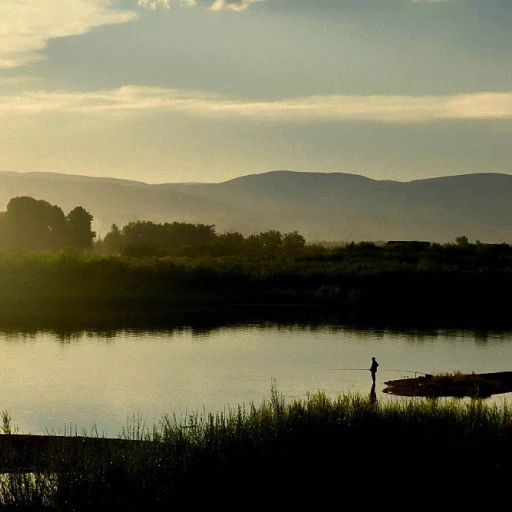The allure of tarpon fishing
Tarpon fever: why anglers can't get enough
Fishing for tarpon is more than a hobby; it's a passion, an obsession, and for many, a way of life. These fish are the quintessential game fish, notorious for their acrobatic leaps and sheer power, which makes them a thrill to catch. The allure of tarpon fishing can be traced back to the late 19th century when these silver giants captivated anglers with their fighting spirit and grandiose size.
A fish that defies the odds
Tarpon, or Megalcops atlanticus, are commonly referred to as the silver king. They can grow up to 8 feet in length and weigh over 280 pounds. Anglers are drawn to them not only for the challenge they present but also for their spectacular leaps and relentless fight. According to the International Game Fish Association (IGFA), the fish's ability to throw hooks with aerial flips adds to its charisma.
An escape like no other
Imagine standing on a Florida coast, the early morning sun creating a shimmer on the water, when suddenly, you hook a tarpon. It pulls hard, racing away, and you sense that you’re in for a fight. The thrill is in the chase, the test of endurance, and the culmination of skill and patience. No wonder so many anglers find themselves addicted to this pursuit.
A community of enthusiasts
It's not just the fish that enthralls; it’s the community that forms around this pursuit. Tarpon fishing tournaments like the Boca Grande Tarpon Capital of the World tournament bring together anglers from across the globe, fostering camaraderie and a spirit of friendly competition. Sharing tips, stories, and even the occasional tall tale, this community is bound by the shared thrill of the chase.
A look at the current world record tarpon
The fascinating history of the current world record tarpon
Bissau's giant and the tale of angler max domecq
In the captivating world of tarpon fishing, one name we've all heard is Max Domecq. This extraordinary angler etched his name in history back in 2003, when he caught the world record tarpon. The colossal fish weighed 286 pounds and hailed from the waters of Guinea-Bissau, West Africa. This record remains unbroken and is a testament to the incredible skills and perseverance of domecq. The current world record tarpon is a source of inspiration for anglers worldwide, pushing them to pursue their own dream catches.Igfa's stamp of approval
The International Game Fish Association (IGFA) plays a crucial role in validating such records. The organization’s rigorous process ensures each potential record holder is legitimate, underscoring the importance of sportsmanship and accuracy in record claims. The tarpon caught by domecq was meticulously weighed and verified according to igfa standards, cementing its status as the reigning champion among giant tarpons.Florida: the unofficial home of giant tarpon
While Guinea-Bissau boasts the current world record, Florida remains the sacred ground for tarpon fishing enthusiasts. Fishing spots like Homosassa, Pine Island, and Key West are legendary for producing massive tarpons. Anglers flock to these waters, hoping to replicate the success of past heroes or even surpass domecq's extraordinary feat. An unforgettable instance was when Dr. Robert Borrego landed a 243-pound giant in Homosassa in 2001. Though shy of breaking the world record tarpon held by domecq, this catch became a symbol of hope for many anglers on similar quests.Persistent legends and local favorites
It’s not just about individuals, though. Many angling communities celebrate local heroes who have come tantalizingly close to the record, such as Gus Bell, who famously battled a near-record tarpon on fly tackle. Fly fishing for tarpon adds an element of art and skill to the chase, making these stories even more legendary. And let's not forget the fascinating stories like that of rito espinosa from colombia, who almost broke the record with a 280-pound beast, or fred roguske's 279-pound tarpon that added fuel to the fires of friendly angling rivalries worldwide.Weighing the importance of records
While records add a competitive edge, the joy of fishing and the love for the water remain central. Records are magnificent milestones, but the chase itself, the camaraderie, and the countless stories form the true heart of tarpon fishing. Would you like to learn more about these giants of the water? You can delve into their fascinating stories by exploring the biggest fish ever caught.Famous tarpon fishing locations
Best spots to reel in a record-setting tarpon
When you're talking about reel-crushing giants, the conversation naturally turns to tarpon. Known for their formidable size and spirited fights, these silvery behemoths have some well-loved haunts that have become almost mythic in the fishing community.
Homosassa, florida
There's no place like Homosassa when it comes to chasing record-sized tarpons. Nestled in the Gulf of Mexico, Homosassa is legendary thanks to Dr. Robert Borrego's impressive 202-pound tarpon caught back in 1975. The area's clear waters and abundant food sources make it an ideal hangout for tarpon, especially during the summer migration. Local guides swear by it; just remember to bring your patience and a strong arm!
Rio indio lodge, nicaragua
The Rio Indio Lodge in Nicaragua is another hotspot that has etched its name onto the tarpon fishing map. Gus Bell pulled in one of his biggest catches here, and the biodiversity of the region – from saltwater estuaries to freshwater lagoons – supports an extraordinary number of giant tarpon. It's not uncommon to see anglers battling these titans for hours.
Guinea-bissau, west africa
For those willing to travel overseas, Guinea-Bissau in West Africa offers untapped potential for world records. The remote waters are less pressured, giving tarpon a chance to grow unchecked. It's in these unspoiled locales that you might find the next big catch, similar to Rito Espinosa’s 286-pound giant tarpon caught back in 2003.
Pine island sound, florida
Travel further down Florida's west coast, and you'll land at Pine Island Sound. This area is famous for its intricate channels and fertile waters, making it a favorite among local and international anglers. Billy Pate, a well-known tarpon angler, spent many successful seasons here, pushing the limits of fly fishing for tarpon.
Tried and true tactics in colombia and texas
While Florida and Africa might dominate the headlines, Colombia and the Texas Gulf Coast also deserve honorable mentions. In Colombia, the confluence of freshwater rivers and the Atlantic Ocean create a thriving ecosystem for tarpon. And in Texas, coastal waters from Galveston to Corpus Christi hold prime spots for bagging a big one.
Local wisdom and insider tips
Seasoned anglers don't just rely on fancy gear or the latest techniques to snag these elusive fish. Local wisdom plays a crucial role. Guides and long-time residents know the secrets of their waters, like when the tarpon are biting or which tide brings them closer to shore. If you really want a shot at breaking records, tapping into local knowledge is indispensable.
Looking to delve deeper into the world of fishing giants? Check out more insightful fishing stories.
Notable anglers in tarpon fishing history
Legendary names in tarpon fishing
The thrilling sport of tarpon fishing has been shaped by some of the most dedicated and skillful anglers in history. Let’s dive into the tales of these fishing legends who stood out in their pursuit of the mighty tarpon.
Captivating stories from the past
Billy Pate was known for his tarpon fly fishing records, holding his place in the fishing hall of fame. Back in March 1982, Billy Pate set an incredible fly fishing record by catching a tarpon that weighed 188 pounds. This remarkable feat took place in Homosassa, Florida, a location renowned for its large tarpon population.
Another name that resonates in the community is Max Domecq. On May 4, 2003, Domecq caught a jaw-dropping 202-pound tarpon in Guinea-Bissau, West Africa. This was an extraordinary catch, considering the challenging waters and the sheer size of the fish.
Heroes of the angling world
Gus Bell is a name synonymous with tarpon fishing in Key West, Florida. Bell’s dedication to sport fishing and his prowess in the water earned him a legendary status among his peers.
Dr. Robert Borrego, with his vast experience, also played a significant role in the angling community. He consistently demonstrated his skills by catching big tarpons, often sharing his expertise with novice and seasoned anglers alike.
In Rio Indio Lodge, Nicaragua, Rito Espinosa wowed the angling world with his incredible catches. His deep understanding of tarpon behavior and innovative techniques put him at the forefront of tarpon fishing.
Tarpon in the wild waters
Fred Roguske and Jere Bruning made headlines with their catches off the coast of Colombia. Their journey and stories continue to inspire numerous anglers today. Roguske’s mastery of the art of tarpon fishing was reflected in every catch, while Bruning’s tactical approach and resilience set him apart.
Bill Brannan, an unforgotten hero, left an indelible mark in the fishing community. His legendary catches and the tales of his fishing battles are still recounted with a mix of awe and admiration.
The allure of tarpon fishing goes beyond just the catch. The histories of these notable anglers captivate imaginations and inspire future generations to venture into the water and chase their own records. Each angler, with their unique style and unmatched determination, has contributed to the rich tapestry of tarpon fishing, cementing their legacy in a sport that continues to challenge and excite.
The role of IGFA in tarpon records
The authority on world record tarpon
The International Game Fish Association (IGFA) plays an essential role in maintaining the integrity of tarpon fishing records. Founded in 1939, the IGFA is widely recognized as the world's leading authority on sportfishing and fish records. Their rigorous standards ensure that all world record fish, including tarpon, are verified and trustworthy.Setting the standards
The IGFA's meticulous process involves various stringent criteria. To qualify as a world record tarpon, the catch must meet or exceed specific weight thresholds, it must be caught according to standardized techniques, and all tackle used must meet IGFA regulations. For example, the current world record tarpon, weighing in at 286 pounds 9 ounces, was caught by Max Domecq in 2003 in Guinea-Bissau, West Africa. His catch surpassed the previous record of 283 pounds 4 ounces set in 1956 by Gus Bell in Key West, Florida.Verification process
Verification involves detailed documentation that includes photographs of the fish, the tackle used, and a thorough account from the angler. The IGFA requires that the fish be weighed on an IGFA-certified scale. In Max Domecq's case, not only did his tarpon meet these criteria, but it also went through multiple rounds of verification, ensuring that his record would stand the test of time.Prominent figures
Some well-known anglers have had their moment in IGFA’s spotlight, including Billy Pate, who revolutionized tarpon fly fishing, and Dr. Robert Borrego, a dedicated tarpon enthusiast. These individuals have contributed significantly to our understanding of tarpon fishing and have set multiple IGFA records using different techniques and tackle.Constantly updated records
The IGFA regularly updates its records, reflecting new achievements in the sport. This makes it a crucial resource for anglers worldwide looking to break barriers and set new milestones. Their comprehensive record-keeping allows for a transparent, competitive environment that fosters fair play and innovation in tarpon fishing.Contribution to conservation
Beyond record-keeping, the IGFA is deeply involved in conservation efforts. They partner with various organizations and employ scientific research to ensure the sustainability of tarpon populations. The IGFA's emphasis on conservation ensures that future generations can enjoy the thrill of pursuing these magnificent fish, while also working to maintain the oceans' delicate ecosystems.Techniques and gear for catching record tarpon
Mastering the art of tarpon fly fishing
The moment when you feel a tarpon strike your fly, it's pure adrenaline. Tarpon fly fishing isn’t just a simple sport—it’s an art. Whether you're casting in the warm waters of Florida or the wild coasts of West Africa, you need more than just luck to catch these magnificent giants. The right technique and gear can make all the difference in the world, turning a good day on the water into an unforgettable one.
Gear to get you started
Firstly, let’s talk about gear. Seasoned anglers like Billy Pate and Max Domecq swear by their choice of equipment. For fly fishing, you’ll need a powerful rod—usually a 10 to 12-weight. The reel should have a reliable drag system because tarpons are strong fighters, often exceeding 100 pounds in weight.
For instance, Billy Pate once battled a gargantuan tarpon in Homosassa, Florida using specialized flies tied specifically to mimic the natural prey of tarpon. His rod stood the test of the massive fish that often reach over six feet in length and weigh hundreds of pounds.
Casting the perfect fly
Catching a tarpon on a fly isn’t just about casting your line and waiting. No siree, you need to consider the weather, the water conditions, and even the specific time of day. Casting to a rolling tarpon takes practice and precision. Expert casters like Gus Bell often note the importance of laying out the fly smoothly and accurately to not spook the fish.
Gus Bell's experience off Pine Island, for instance, underlines the importance of mastering the double-haul cast. He said, “It took me years to perfect my casting, but once I did, it made the difference between going home with stories and going home with a story and a fish.”
Fighting and landing the giant
Hooking a tarpon is just the beginning; the real challenge starts once the fish is on the line. Tarpon are known for their acrobatics, often leaping high out of the water to shake the hook. Using a 60-pound tippet can be advantageous, offering the strength needed to control these powerful fish. Dr. Robert Borrego, who has extensive experience in Colombia, once highlighted that keeping the rod tip low and the line tight helps in steering the fish and preventing it from jumping.
Expert insights for seasoned anglers
Even seasoned anglers who have bagged behemoths like the 281-pound tarpon by C. Mel Fisher in Key West, understand the importance of patience and persistence. Fred Roguske emphasizes that every battle with a tarpon is unique. “Catching a tarpon is a test of both your skills and patience,” says Roguske, who has countless records under his belt, including a 202-pound monster.
Tapping into local knowledge
One of the best ways to improve your chances is by tapping into local knowledge. Guides like Bill Brannan and Jere Bruning, based in Tarpon-rich zones like Rio Indio Lodge in Nicaragua, have intimate knowledge of the local waters and seasonal patterns. Their insights can be invaluable for anyone aiming to catch a record-breaking tarpon.
Techniques and gear for catching record tarpon are as diverse as the anglers who have perfected them. From Florida to Guinea-Bissau, mastering these methods requires patience, skill, and the right equipment. But when you finally feel the power of a giant tarpon on your line, every bit of effort is worth it.
Controversies and challenges in tarpon record claims
The potential for manipulation in the claims
Even in the tranquil waters of recreational fishing, controversies swirl, muddying the records like silt in a stream. A significant point of contention arises from the verification of world record tarpon claims, as the process can sometimes seem convoluted and opaque. It’s a topic that brings out whispers of favoritism and inaccuracies, particularly since tarpon fishing is a sport with high stakes and even higher passions.Inconsistencies in measurement and reporting
The crux of most challenges to tarpon record claims lies in the nitty-gritty details: the measurements. Accuracy is everything, and deviations can lead to significant disputes. For example, Gus Bell's claim to a massive tarpon is a matter of great debate, with some questioning the method of measuring the fish's precise length and girth. And it's not just about catching a big one; proper documentation is crucial to secure a place in the International Game Fish Association (IGFA) records. An examination of record claims reveals discrepancies. Cases such as Billy Pate's renowned catch in Homosassa, Florida, bring attention to these potential flaws. The fish caught famously weighed 188 pounds, measured meticulously, yet still faced scrutiny over the accuracy of its reported girth and length.Questions around ethical fishing practices
Ethical concerns have their place too. Tarpon anglers often push the boundaries to catch the biggest fish, sometimes at the expense of the tarpon's well-being. Practices like using oversized hooks or excessively strong tackle can harm these magnificent fish. Anglers arguing for proper catch-and-release techniques advocate for the health of tarpon, ensuring that record-breaking pursuits don't lead to the depletion of tarpon populations.The authenticity of historical records
Historical tarpon records add another layer of complexity. The largest tarpon ever claimed to be caught weighed a staggering 286 pounds. However, this claim lacks the modern-day verification methods we see now, leading to questions about its authenticity. Researchers have debated whether methods at the time could yield such a giant catch accurately, despite the records being well-regarded for years. This brings in the aspect of evolving technology and more stringent guidelines by institutions like the IGFA.Moving forward: Stricter guidelines and technologies
As tarpon fishing continues to evolve, there's a push for clearer guidelines and advanced technologies in measuring and verifying catches. Innovations like digital scales and video proof are becoming more prevalent, ensuring that the data sent to the IGFA holds water. Adopting such measures would quell many disputes, setting a new standard for the sport and safeguarding its integrity. While controversies may pepper the landscape of tarpon fishing, they highlight the need for accurate and ethical practices. It reinforces the undeniable allure of chasing these silver kings of the deep, making every record and claim a point of fascination and rigor in the angling community.The future of tarpon fishing and record-breaking
Evolving trends in tarpon fishing
The allure of catching a monster tarpon has brought significant shifts and innovations in the world of tarpon fishing. Not only have advancements in fishing gear been remarkable, but there’s a growing emphasis on conservation and sustainable fishing practices. Anglers are increasingly focused on catch-and-release techniques to preserve the tarpon population. According to the International Game Fish Association (IGFA), over 90% of caught tarpons are now released back into the water, a trend that's promising for the future of this iconic fish species.
Advancements in gear and techniques
The evolution of fishing gear has greatly influenced tarpon fishing. Modern rods and reels are lighter, yet stronger, offering anglers better control over their fight with the tarpon. For instance, the use of braided lines has become popular due to their thin diameter and incredible strength, allowing anglers to manage even the largest tarpons. Fly fishing gear has also seen advancements; the development of high-quality, saltwater-resistant fly rods and specific tarpon flies, like the famous Toad fly pattern, have significantly increased catch rates.
Growing popularity and accessibility
Tarpon fishing hotspots are becoming more accessible thanks to better travel options and tourism infrastructure. Locations like Homosassa, Florida, Key West, and Pine Island remain as popular as ever, but angling enthusiasts are also exploring new territories. Guinea-Bissau and Nicaragua are emerging as prime spots due to their relatively untapped tarpon populations. Outfitters like Rio Indio Lodge in Nicaragua are becoming synonymous with successful tarpon expeditions, providing a thrilling new frontier for anglers.
Fostering the next generation of anglers
The future of tarpon fishing also lies in fostering the next generation of anglers. Local fishing clubs have been instrumental in this, offering workshops, youth programs, and tournaments that focus on both skill development and conservation. These clubs are helping to create a community of responsible anglers who value the longevity of tarpon fishing as much as the thrill of the chase. There's a notable shift towards mentoring young anglers, which is essential for the sustainability of the sport.
Balancing excitement with conservation
The balance between the excitement of catching a record tarpon and the need for conservation is delicate but essential. Notable anglers, like Dr. Robert Borrego and Billy Pate, have long been advocates for responsible fishing practices. Their legacies continue to inspire new generations to prioritize the health of tarpon populations alongside their record-breaking ambitions.

-large-full.webp)
-large-teaser.webp)



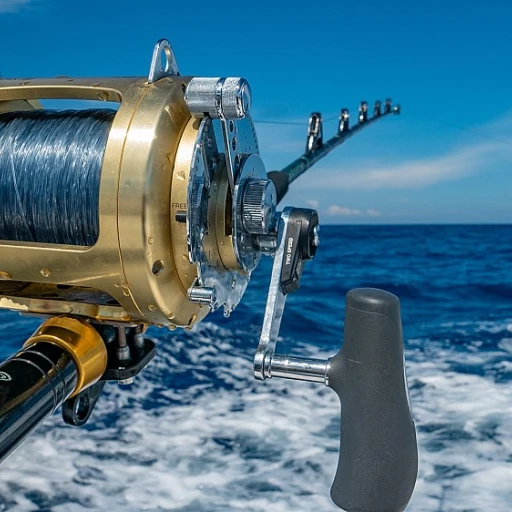
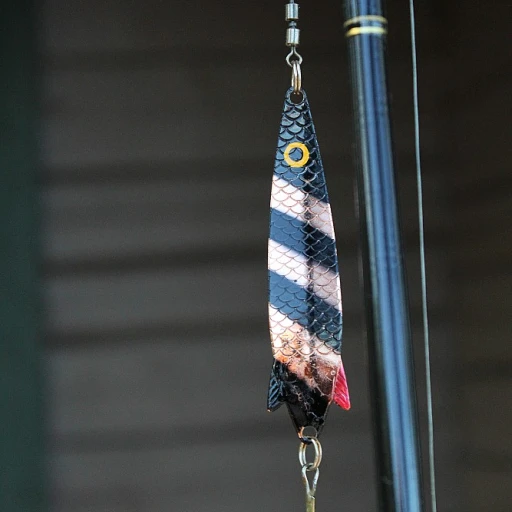

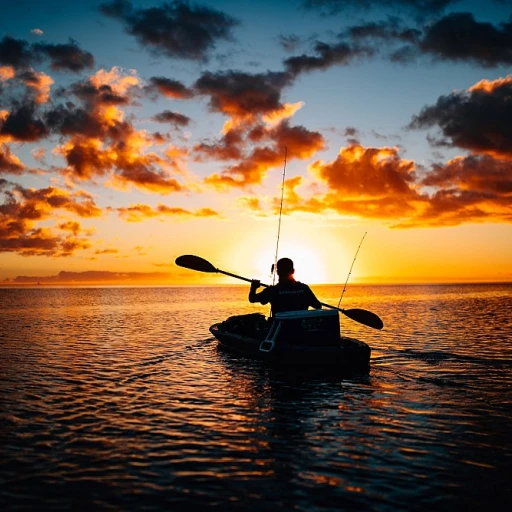
-large-teaser.webp)
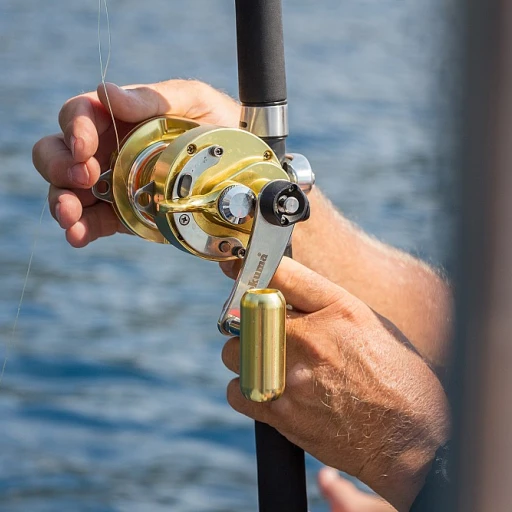
-large-teaser.webp)
